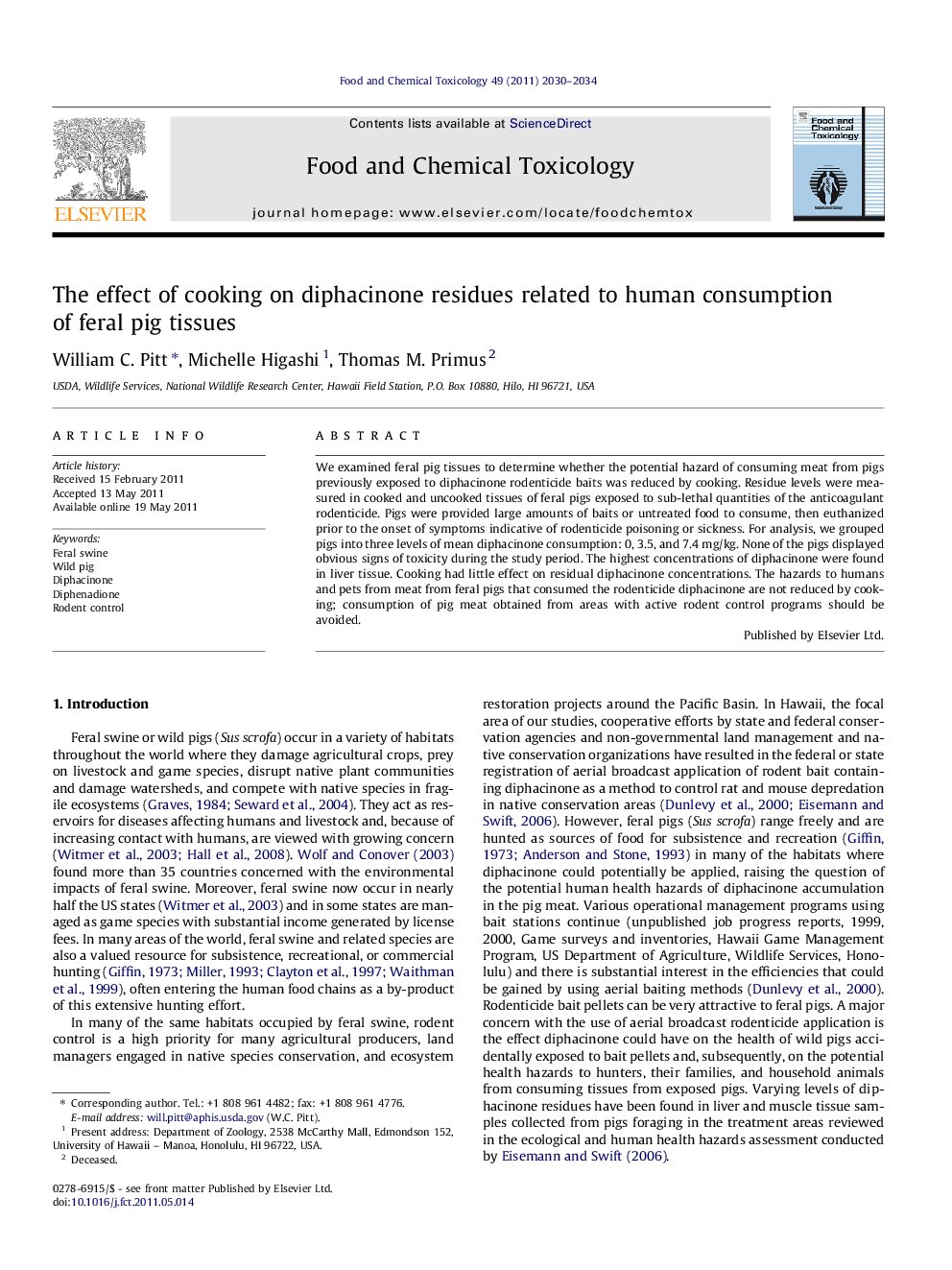| کد مقاله | کد نشریه | سال انتشار | مقاله انگلیسی | نسخه تمام متن |
|---|---|---|---|---|
| 5853048 | 1130856 | 2011 | 5 صفحه PDF | دانلود رایگان |

We examined feral pig tissues to determine whether the potential hazard of consuming meat from pigs previously exposed to diphacinone rodenticide baits was reduced by cooking. Residue levels were measured in cooked and uncooked tissues of feral pigs exposed to sub-lethal quantities of the anticoagulant rodenticide. Pigs were provided large amounts of baits or untreated food to consume, then euthanized prior to the onset of symptoms indicative of rodenticide poisoning or sickness. For analysis, we grouped pigs into three levels of mean diphacinone consumption: 0, 3.5, and 7.4Â mg/kg. None of the pigs displayed obvious signs of toxicity during the study period. The highest concentrations of diphacinone were found in liver tissue. Cooking had little effect on residual diphacinone concentrations. The hazards to humans and pets from meat from feral pigs that consumed the rodenticide diphacinone are not reduced by cooking; consumption of pig meat obtained from areas with active rodent control programs should be avoided.
⺠Pigs that have consumed diphacinone may have high residue levels in tissue. ⺠Pigs with high residues may not show obvious signs of toxicity. ⺠Cooked samples had slightly higher diphacinone concentrations than raw samples.
Journal: Food and Chemical Toxicology - Volume 49, Issue 9, September 2011, Pages 2030-2034